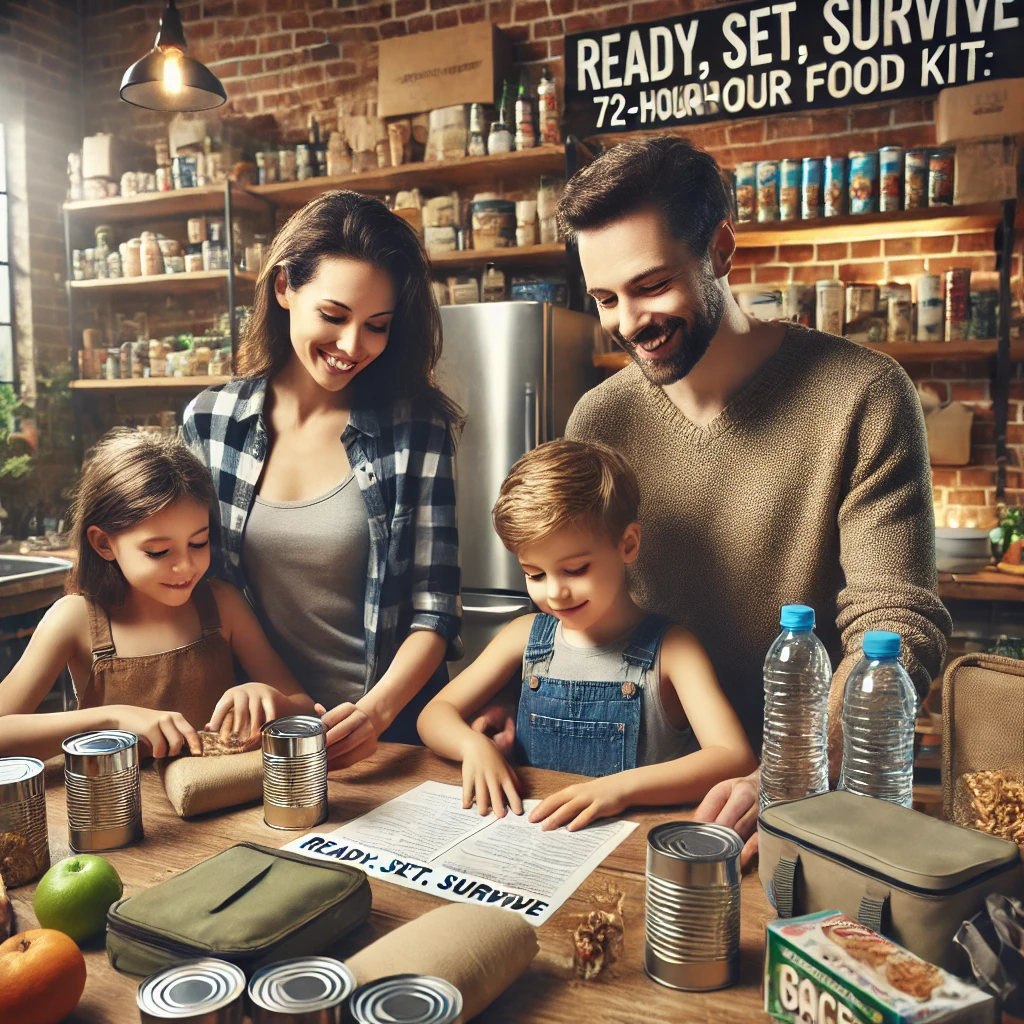
- August 23, 2024
- 6:58 pm
- No Comments
Picture this: the lights flicker and go out, snow begins to fall heavily, or perhaps the news reports a storm approaching. Whatever the scenario, having a 72-hour food kit ready keeps you and your loved ones one step ahead of any emergency. This guide is your ticket to peace of mind and a belly full of comfort food, no matter what comes your way. Let’s dive into the essentials of assembling a food kit that will fortify you against the unpredictabilities of life.
Ready for Anything: Your 72-Hour Food Kit Guide
When it comes to being prepared, a 72-hour food kit is your golden ticket to safety and sustenance. This compact collection of meals and snacks is designed to keep you nourished and energized during the first crucial days of an emergency. Think of it as your culinary shield, protecting you from the pangs of hunger and the anxiety of uncertainty. The key here is to focus on non-perishable, nutrient-dense items that are easy to store and even easier to prepare.
Start with the basics: canned goods, dried fruits, and grains. These shelf-stable products have long shelf lives and provide essential vitamins and minerals. Beans, lentils, and quinoa are excellent options that offer protein and fiber, vital for keeping your energy levels high and your spirits up. Don’t forget to pack a can opener and utensils—after all, those can’t-open-a-can moments are the last thing you need in a crisis!
Hydration is equally important. Stock up on bottled water, aiming for at least one gallon per person per day. Add some powdered drink mixes or instant coffee for a morale boost when you need it most. A well-crafted 72-hour food kit isn’t just about survival; it’s about thriving in the face of adversity. Make sure to review and refresh your supplies every six months to ensure everything is in top-notch condition. Ready, set, survive!
Survival Made Simple: Crafting Culinary Comfort
Survival doesn’t have to mean eating bland or boring food. In fact, crafting a 72-hour food kit can be an exercise in culinary creativity. Start by thinking about your favorite comfort foods and finding their shelf-stable counterparts. Love mac and cheese? Opt for a boxed version that only requires water. A fan of hearty soups? Canned varieties can be just as satisfying. The goal is to create meals that will uplift your spirits as well as sustain your body.
Add a personal touch with small packets of your favorite spices and seasonings. A dash of chili powder, a sprinkle of cinnamon, or a pinch of salt can transform a simple meal into a delightful experience. Consider including instant oatmeal packets, which are not only filling but also customizable. Add some dried fruit or a spoonful of peanut butter to create a breakfast that’s both nutritious and indulgent. These small additions can make a world of difference when you’re facing the challenges of an emergency situation.
Finally, don’t forget the snacks! Granola bars, nuts, and dark chocolate can provide quick energy and a much-needed treat during stressful times. Include a variety of flavors and textures to keep things interesting. Remember, the objective is to create a kit that brings a sense of normalcy and comfort, making the ordeal a bit more bearable. When you know you’ve got a little bit of culinary comfort in your emergency stash, facing the unknown becomes a lot less daunting.
Creating a 72-hour food kit is more than just a practical measure; it’s a way to ensure that you and your loved ones can face any emergency with confidence and a smile. By selecting a mix of nutritious staples and comforting treats, you’re crafting a safety net that supports both body and soul. So, take a moment to assemble your kit, knowing that you’re not just preparing for the unexpected—you’re preparing to thrive, no matter what comes your way. Ready, set, survive!